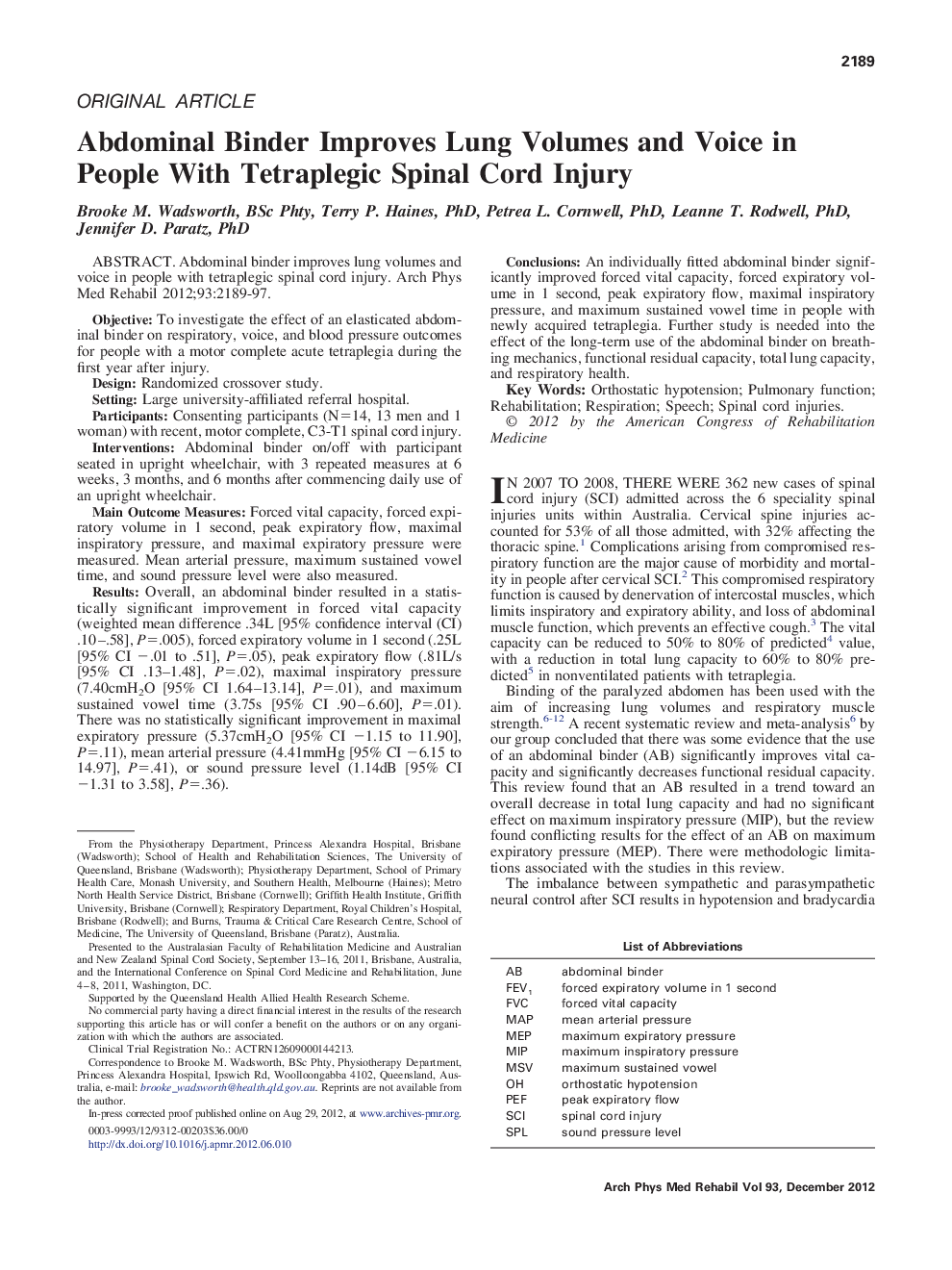| Article ID | Journal | Published Year | Pages | File Type |
|---|---|---|---|---|
| 3449281 | Archives of Physical Medicine and Rehabilitation | 2012 | 9 Pages |
Abdominal binder improves lung volumes and voice in people with tetraplegic spinal cord injury.ObjectiveTo investigate the effect of an elasticated abdominal binder on respiratory, voice, and blood pressure outcomes for people with a motor complete acute tetraplegia during the first year after injury.DesignRandomized crossover study.SettingLarge university-affiliated referral hospital.ParticipantsConsenting participants (N=14, 13 men and 1 woman) with recent, motor complete, C3-T1 spinal cord injury.InterventionsAbdominal binder on/off with participant seated in upright wheelchair, with 3 repeated measures at 6 weeks, 3 months, and 6 months after commencing daily use of an upright wheelchair.Main Outcome MeasuresForced vital capacity, forced expiratory volume in 1 second, peak expiratory flow, maximal inspiratory pressure, and maximal expiratory pressure were measured. Mean arterial pressure, maximum sustained vowel time, and sound pressure level were also measured.ResultsOverall, an abdominal binder resulted in a statistically significant improvement in forced vital capacity (weighted mean difference .34L [95% confidence interval (CI) .10–.58], P=.005), forced expiratory volume in 1 second (.25L [95% CI −.01 to .51], P=.05), peak expiratory flow (.81L/s [95% CI .13–1.48], P=.02), maximal inspiratory pressure (7.40cmH2O [95% CI 1.64–13.14], P=.01), and maximum sustained vowel time (3.75s [95% CI .90–6.60], P=.01). There was no statistically significant improvement in maximal expiratory pressure (5.37cmH2O [95% CI −1.15 to 11.90], P=.11), mean arterial pressure (4.41mmHg [95% CI −6.15 to 14.97], P=.41), or sound pressure level (1.14dB [95% CI −1.31 to 3.58], P=.36).ConclusionsAn individually fitted abdominal binder significantly improved forced vital capacity, forced expiratory volume in 1 second, peak expiratory flow, maximal inspiratory pressure, and maximum sustained vowel time in people with newly acquired tetraplegia. Further study is needed into the effect of the long-term use of the abdominal binder on breathing mechanics, functional residual capacity, total lung capacity, and respiratory health.
